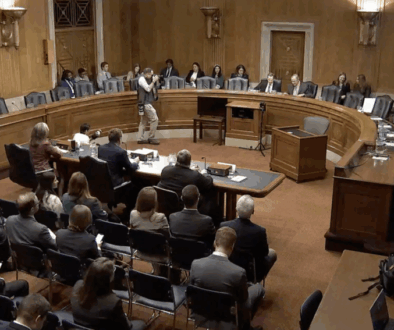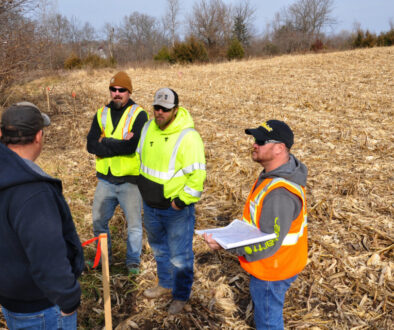Community air monitors give Detroiters new power against pollution
DETROIT — As the Rev. Sharon Buttry drives by the Jayne-Lasky Park on Detroit’s east side, she points to the expansive 65-acre park, located just miles from her home.
“I tell people when they take their kids to the park, wear masks,” she said.
Buttry, a clergy leader at the American Baptist Churches USA who is on the board of the Detroit Hamtramck Coalition for Advancing Healthy Environments, is headed just north of the park to the Cadillac Heights neighborhood, a quiet community that now is the epicenter of a bitter fight over a proposed expansion of a concrete facility that area residents fear is dangerously polluting their air.
She navigates her car along a potholed road running between the plant site and a large, grassless lot bordering the plant that used to feature dozens of single family homes that have since been bulldozed. “This used to be a thriving neighborhood,” she said.

While many homes have been bought out and demolished by an entity affiliated with the Kronos Concrete plant, the remaining neighborhood homes have become enveloped by truck traffic and dust generated by operations at the plant. Kronos opened in 2022 and is controlled by the notoriously wealthy and powerful Maroun family, which counts large swaths of Detroit real estate among its holdings. The concrete facility is part of the Moroun-owned subsidiary, Hercules Materials Holdings LLC, which didn’t respond to requests for comment on the air quality concerns and expansion.
On its website the company touts the Kronos facility as a $10,000,000 investment into Cadillac Heights, calling it the biggest investment into the community in decades. It says the site development will include tree plantings and other street improvements, none of which have been done to date.

The facility was under construction before it secured the necessary permits, and now the neighborhood fears the Maroun family is planning an expansion that would expand the concrete mixing and truck traffic, which worsen the air pollution surrounding the plant, the residents say.
For those breathing that air, it is already at dangerous levels.
Air quality testing near the plant by Detroit-based startup JustAir shows that over the past year pollutants known as PM2.5 exceeded the Environmental Protection Agency (EPA) health standards more than 54% of the days. Inhalation of these tiny air pollutants, which are 30 times smaller than the width of a human hair, are linked to asthma, heart and lung problems and preterm births. The testing does not prove the pollution spikes are due to Kronos. But Buttry hopes the data will help her push for a plant shutdown.

“This level of pollution is a direct threat to human health,” she said.
The PM2.5 data, which came from a small air monitor set up on the corner of the plant lot, would have been unavailable just a couple years ago. The nearest state monitor is miles away.
“This level of pollution is a direct threat to human health.” -Rev. Sharon Buttry
The air monitor at the Kronos site is one of 100 installed last year across Detroit and surrounding Wayne County by JustAir, a tech company that got its start four years ago and was inspired after founder and Detroit resident Darren Riley developed asthma. The installations were a partnership with Wayne County, which provided funding for the monitors and works with JustAir to deliver the data to residents. Previously in Detroit there were only seven air monitors run by the state, five run by the city.
“We prioritized high-pollution and high-vulnerability areas such as neighborhoods near industrial corridors and schools,” said Warren Evans, Wayne County executive.
The work by JustAir adds to a growing network of organizations and residents deploying air monitors across Detroit, which has long suffered from some of the worst air and highest rates of asthma in the country. More than 1,000 residents are now receiving air quality text alerts from JustAir, according to JustAir chief operating officer Sarah Craft.
“There are so many people who have power to actually do something with this outside of the federal government,” Craft said.
Individuals armed with real-time data about air quality can make informed decisions about when to stay indoors, Craft noted. Others made aware of air quality concerns told Craft they made behavioral changes, such as a father who stopped idling his vehicle when he picks up his daughter from school, and a mother who realized her smoking makes bad air days even worse for her kids.
“And so these are just like teeny tiny things, but it’s behavioral awareness,” Craft said.
The findings from the air quality monitors can’t be used to enforce regulations. And community air monitoring can be imperfect. However, advocates say the ever-expanding monitoring and access to data is shining a light on the worst sources of pollution and empowering residents and local officials.
“It’s time to have discussions with our elected officials and industry polluters … and establish sanctions that will correct behaviors and improve the environment,” said Cinthya Casillas, a Detroit resident who’s on the JustAir Advisory Committee.
Detroit’s air quality problems
The US has seen a 37% decrease in the national average of PM2.5 levels over the past two decades, largely thanks to stricter regulations, but the pollutant remains potent in Detroit. The city received an “F” grade on the American Lung Association’s latest State of the Air report, and was ranked sixth worst city out of 208 for annual particle pollution.
Earlier this year, the Michigan Department of Environment, Great Lakes, and Energy (EGLE) told the EPA that Wayne County was breaking federal standards for PM2.5.
The EPA has a year to evaluate whether Wayne County should be designated as a “non-attainment” area for PM2.5, which would force the county to work with the state and make a plan to reduce the pollution.
The Trump administration said it is reviewing PM2.5 regulations, signaling that it will reduce the health standards. It’s unclear how this would affect areas out of compliance like Wayne County.
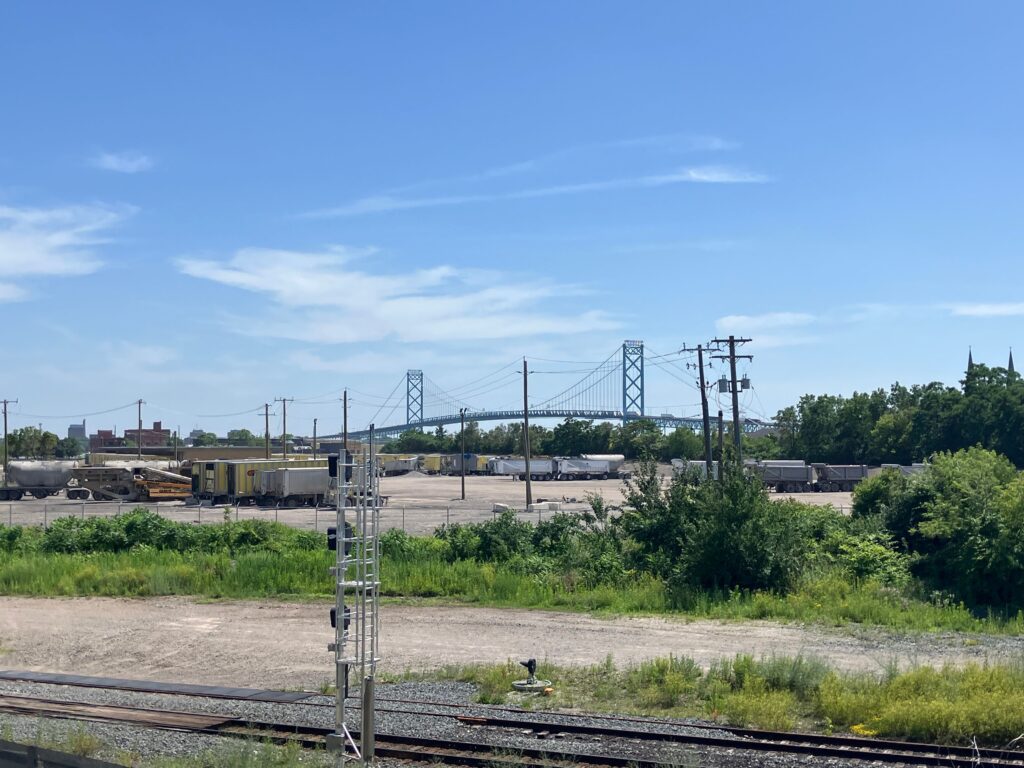
Particulate matter — along with other harmful air pollutants like nitrogen dioxide, carbon monoxide, sulfur dioxide and ozone — are near-daily features of life for many residents across Detroit.
“I was asthmatic when I was a child, but I feel like my breathing is getting worse, even though I’m not asthmatic anymore. It’s something that we see a lot in Detroit, especially in southwest Detroit,” said Casillas, who lives in the Hubbard Richard neighborhood on the city’s southwest side, which has the highest levels of air pollution in the state.
Last year Detroit was named the third worst city in the US to live in with asthma by the Asthma and Allergy Foundation of America. The most recent asthma data from the Michigan Department of Health & Human Services found that the rate of child asthma in Detroit was 14.6% compared to the state’s 8.4%.
Air quality information is critical for vulnerable populations, such as people with asthma, said Nelson Roque, an assistant professor and researcher at Penn State who published a study this year on air quality “deserts.”
“Without information, we rely on our best sensor, our nose, but that’s no way to quantify dangers,” he said.
Empowering residents — and local officials
The JustAir monitoring data is also cited in a lawsuit filed by an area resident against the company that owns the land the Kronos plant sits on, Crown Enterprises. Air sampling near the plant shows that PM2.5 readings have increased from an average of 10.3 μg/m3 in 2024 to 12.46 μg/m3 as of 2025, and have spiked to as high as 259.4 μg/m3, “far exceeding safe air quality standards designed to protect human health,” the lawsuit states.
The data show a “significant deterioration in air quality since Crown’s Kronos site concrete operations intensified,” according to the lawsuit.
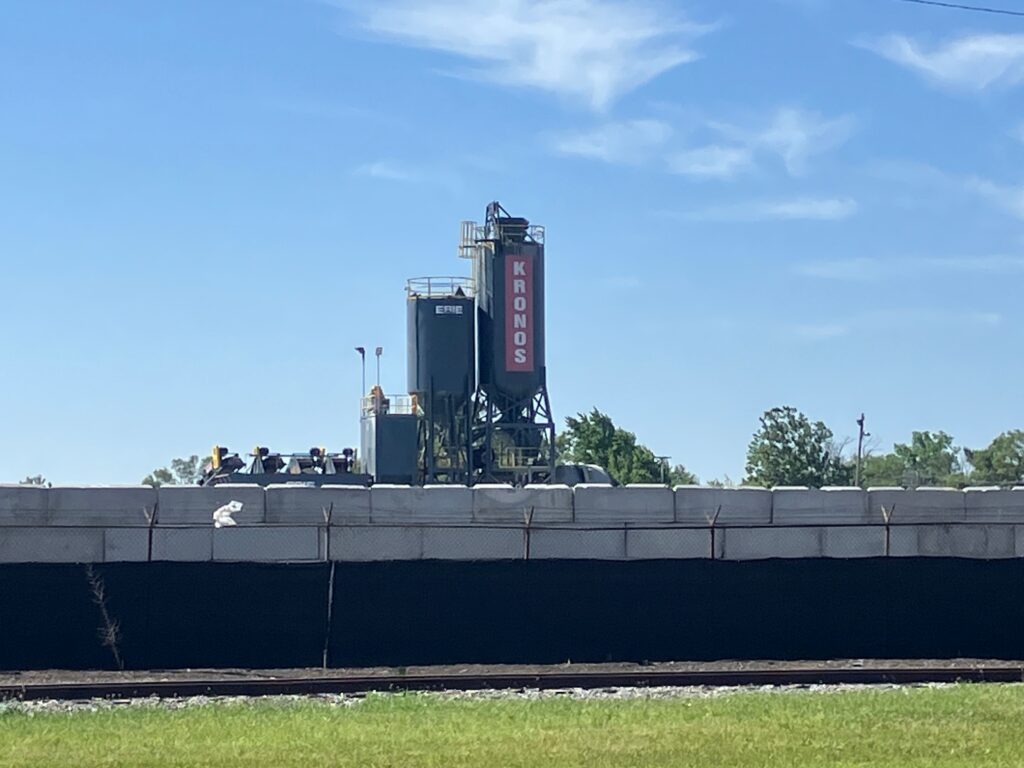
“At least for the time period that that monitor has been running, the area is not in compliance with the national air quality standards for particulate matter,” said Andrew Bashi, a lawyer at the Great Lakes Environmental Law Center. Bashi is not involved in the lawsuit but has been advocating on behalf of residents who anticipate a plant expansion.
The lawsuit is a counter complaint as Crown Enterprises, which did not respond to requests for comment, originally had sued the resident, alleging he trespassed on company property.
“At least for the time period that that monitor has been running, the area is not in compliance with the national air quality standards for particulate matter.” – Andrew Bashi, Great Lakes Environmental Law Center
In a response to the resident’s counter-complaint, Crown’s attorneys denied all of the allegations of pollution and environmental harm as untrue. The response states that Crown denies it “is subjecting a small neighborhood to severe environmental harm and disruption,” denies that it “has caused environmental hazards off-site,” and denies that the resident is entitled “to any relief.”
Bashi added that the PM2.5 is much higher at the JustAir monitor at the fenceline of the facility than it is at any of the nearby state monitors. The monitor near Kronos showed that the highest day for PM2.5 over the past year was more than 7.5 times the EPA health threshold. “It indicates that there’s something unique about that area,” he said.
This is a major advantage of having these additional monitors, Roque said, as they give more granular information and paint a fuller picture.
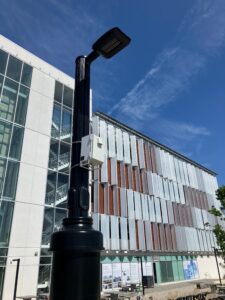
Local officials used JustAir data to push back on the state and federal government this year when Wayne County executive Evans sent a letter to state regulators citing the data from new monitors disagreeing with the state’s plan to remove the county’s non-attainment status for sulfur dioxide. Evans said the state monitoring methods “do not fully account for real-world conditions or the cumulative impacts on nearby communities” and provided JustAir data that showed harmful levels of sulfur dioxide jeopardize “the health of residents living in this area.”
Casillas said JustAir data allows her and her family to be instantly alerted to bad air that could harm them. “I use it in combination with my weather app …that also gives me an alert that the air is not good right now, don’t go out,” she said.
Stuart Batterman, an environmental sciences and public health researcher and professor at the University of Michigan and the co-investigator at Community Action to Promote Healthy Environments, a university partnership with communities in Detroit to tackle dirty air, said the proliferation of air monitoring has brought residents a greater level of scientific literacy. “People know about PM2.5 and we don’t have to say exactly what it is anymore,” he said. “People get it.”
The Green Door Initiative, a Detroit environmental nonprofit that works with JustAir on monitoring efforts, this year launched an Air Quality Advocacy Academy, a 9-month training for more than a dozen Detroiters to learn about air quality and monitoring, environmental justice and advocacy. “They can take this knowledge … become community leaders,” said Duaa Ballout, a program manager at the Green Door Initiative.
“People know about PM2.5 and we don’t have to say exactly what it is anymore. People get it.” – Stuart Batterman, University of Michigan
Ballout said the Academy is already having an impact — residents started a petition to stop an industrial pump station in a Detroit neighborhood. “We consider that a win because they are taking the information that they are learning and applying it to their everyday life.”
Challenges remain

There are challenges with community air monitors. Craft said a few monitors have been damaged or gone missing. Many monitors are solar powered and Detroit had a cloudy, long winter. And sometimes there are software bugs.
“Challenges just exist,” she said. “Things go wrong. And there are things that this data can prove and also things that this data can’t prove. It does not measure everything.”
The city has provided air purification equipment to some homes. But at the same time, sources for air pollution in Detroit are expanding.
Michigan’s EGLE just approved an expansion for one of the region’s most prolific polluters — DTE Energy’s EES Coke facility on Zug Island, sitting on the south end of Detroit. The city is also adding a second bridge to Canada — the Gordie Howe International Bridge, named after the city’s famous Detroit Red Wings hockey player — which will bring more traffic pollutants.
“One of the biggest challenges is making sure that air quality data is not just collected but actually reaches and resonates with the people who need it most,” Evans said. “Data is only as useful as the number of people who know about it.”

But residents like Casillas remain optimistic. JustAir has given her and her family and friends information they wouldn’t otherwise have.
“I’m a family advocate for head start programming. And we have a lot of kids who have breathing issues,” she said, adding that the information allows her to know when to keep children from playing outside to reduce their exposure to the air pollutants.
There’s a monitor just a few blocks from her house. “We wanted to have it there because we have the constant traffic of trucks that are going from Canada to Michigan” on the Ambassador Bridge, she said.
The bridge averages about 10,000 vehicles a day, and traffic plays an huge role in Casillas’ neighborhoods’ air problems — Batterman and colleagues attribute about 40% of PM2.5 emissions in the city to traffic and construction equipment.
While the JustAir monitors are giving Detroiters a fuller picture of their air, Roque said “it should be the EPA or state funding these.”
“As amazing as these efforts are,” community air monitoring “passes the burden to the people already affected,” Roque said.

